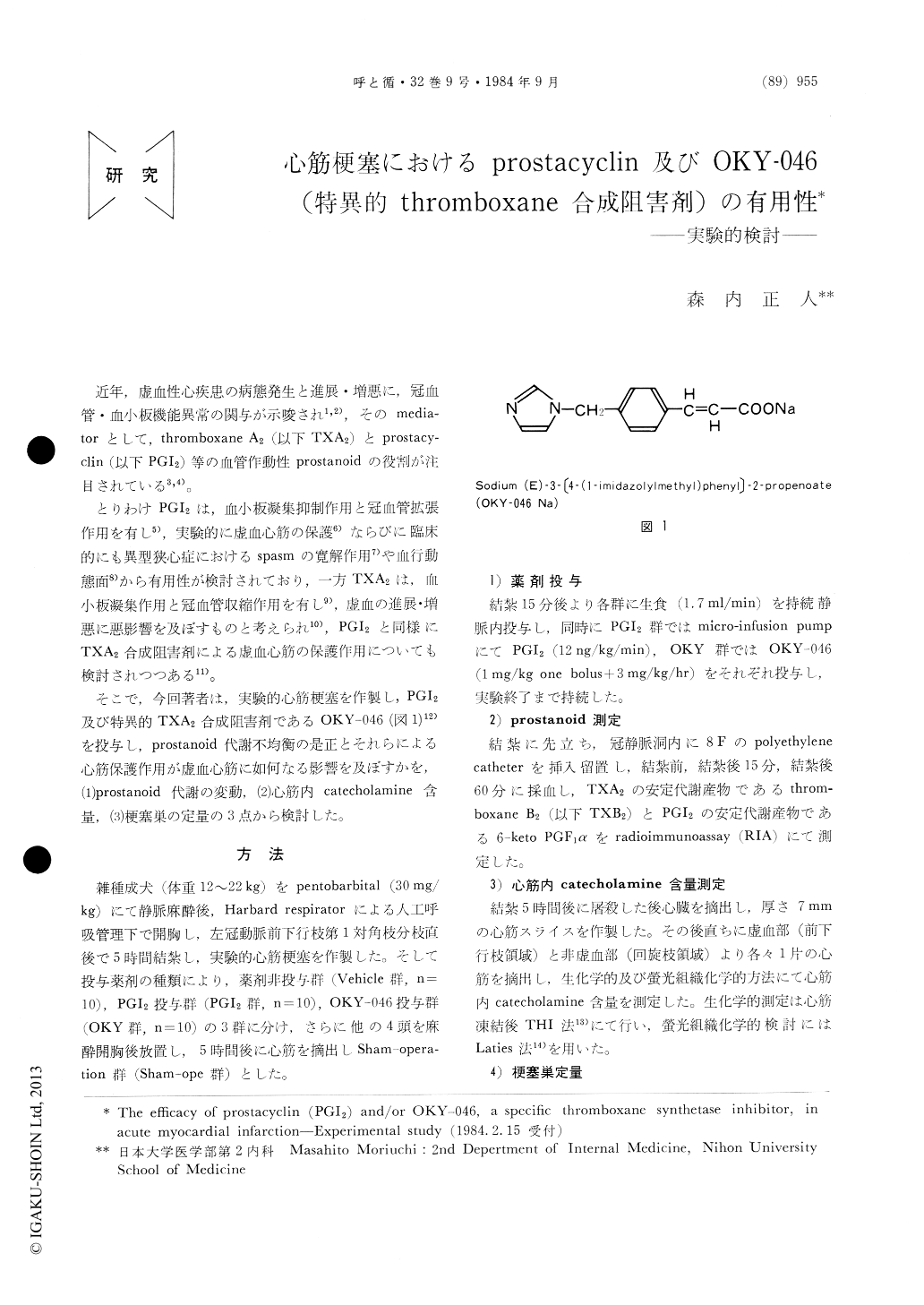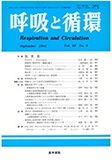Japanese
English
- 有料閲覧
- Abstract 文献概要
- 1ページ目 Look Inside
近年,虚血性心疾患の病態発生と進展・増悪に,冠血管・血小板機能異常の関与が示唆され1,2),そのmedia—torとして,thromboxane A2(以下TXA2)とprostacy—clin(以下PGI2)等の血管作動性prostanoidの役割が注目されている3,4)。
とりわけPGI2は,血小板凝集抑制作用と冠血管拡張作用を有し5),実験的に虚血心筋の保護6)ならびに臨床的にも異型狭心症におけるspasmの寛解作用7)や血行動態面8)から有用性が検討されており,一方TXA2は,血小板凝集作用と冠血管収縮作用を有し9),虚血の進展・増悪に悪影響を及ぼすものと考えられ10),PGI2と同様にTXA2合成阻害剤による虚血心筋の保護作用についても検討されつつある11)。
Thromboxane A2 (TXA2) is known to exhibit a potent vasoconstrictive action and an ability to increase platelet aggregation, while prostacyclin (PGI2) exhibits a vasodilatory action and an ability to decrease platelet aggregation. The effectiveness of PGI2 and OKY-046, a specific thromboxane synthetase inhibitor, in anesthetized dogs were determined in terms of prostanoid metabolism, noradrenaline (NA) contents in ischemic myocar-dium and infarct size.
PGI2 (12 ng/kg/min) or OKY-046 (1mg/kg one bolus+3 mg/kg/hr) was administered at 15 minutes after LAD ligation. TXB2, a stable metabolite of TXA2, and 6-keto PGF1α, a stable metabolite of PGI2, were measured before, at 15 minutes and60 minutes after ligation. Dogs were sacrificed at 5 hours after ligation. NA contents (THI method and method of Laties) and infarct size (NBT stain) were then evaluated.
(omission)
Conclusion : These results suggest that pros-tanoids play an important role in pathogenesis and/ or development of ischemic heart disease and the modulation of prostanoids metabolism might be clinicaly useful for the treatment.

Copyright © 1984, Igaku-Shoin Ltd. All rights reserved.


